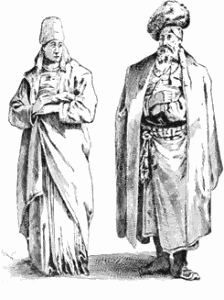History and Genetics: Eastern Europe
After the expulsion of most of Ashkenazic Jewry from their homes in the 13th and fourteenth centuries,[1] many Jews drifted to Eastern Europe. Jewish settlement in Poland and Lithuania was for the most part in small communities although later Jews would cluster in larger towns and cities with the increasing modernization of the economy. Throughout the earlier period, however, and for many Jews even right up to the Holocaust, these smaller village communities (Shtetlach) remained the norm. This phenomenon has been used to explain the prevalence of certain diseases among East European Ashkenazic Jewry. It is assumed that rather small founding groups that for some reason had inherited these particular genetic characteristics originated these communities. The notion of a small number of founders certainly makes sense, since in general, the population of those expelled from Franco-Germany cannot have been large and they clearly established themselves in Eastern Europe in small communities. A number of genetic diseases found among Jews from Poland and Lithuania indicate later founding events for those communities, again in line with what our historical sources show. This community would have come into existence approximately 20 generations ago, which is close to 1388 when Vytautas, the ruler of the Grand Duchy of Lithuania, allowed Jews to reside there. Even after the establishment of Jews in Eastern Europe, some additional Jewish genetic diseases continued to develop among them, aided by the high rates of endogamy.


Leave a Reply